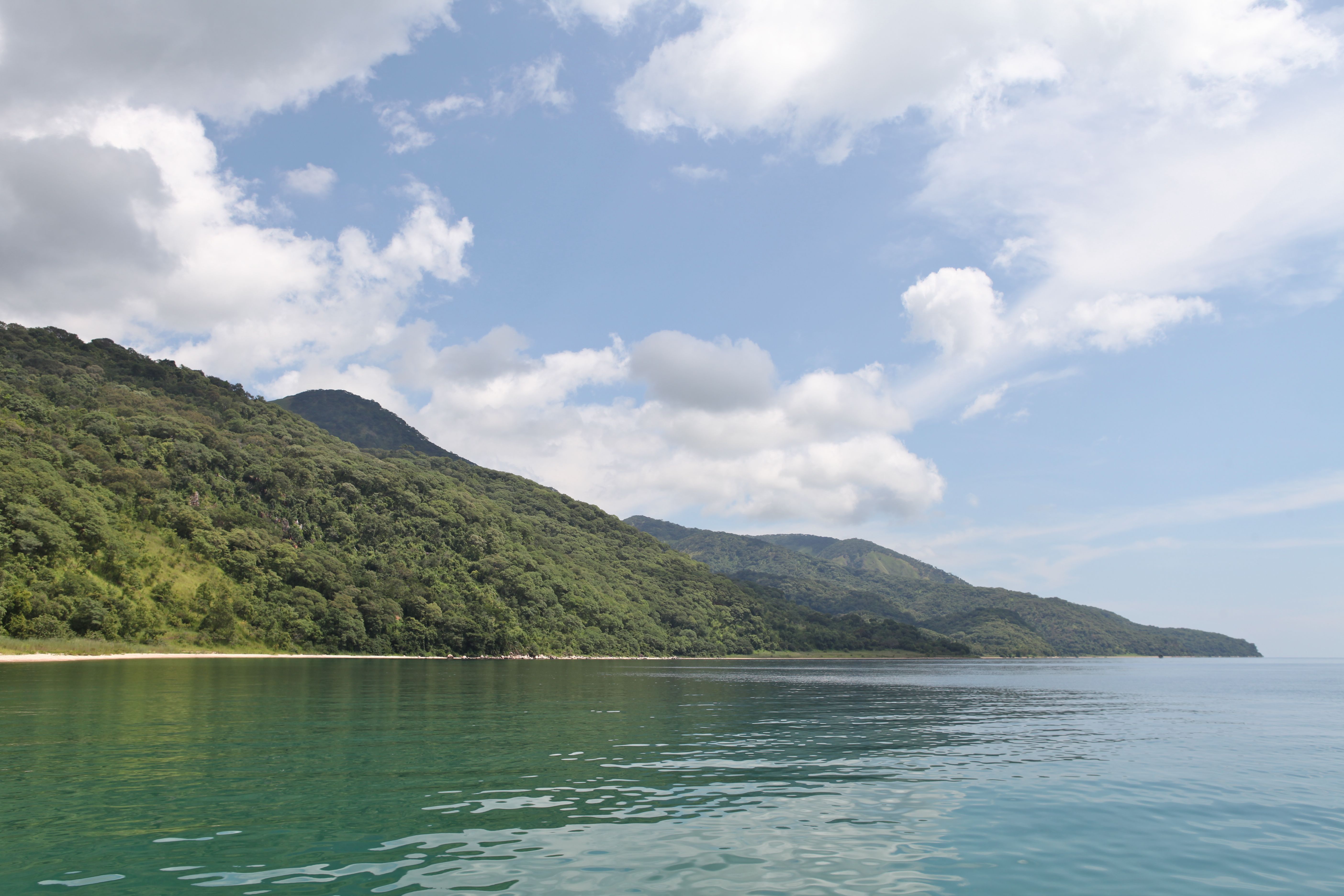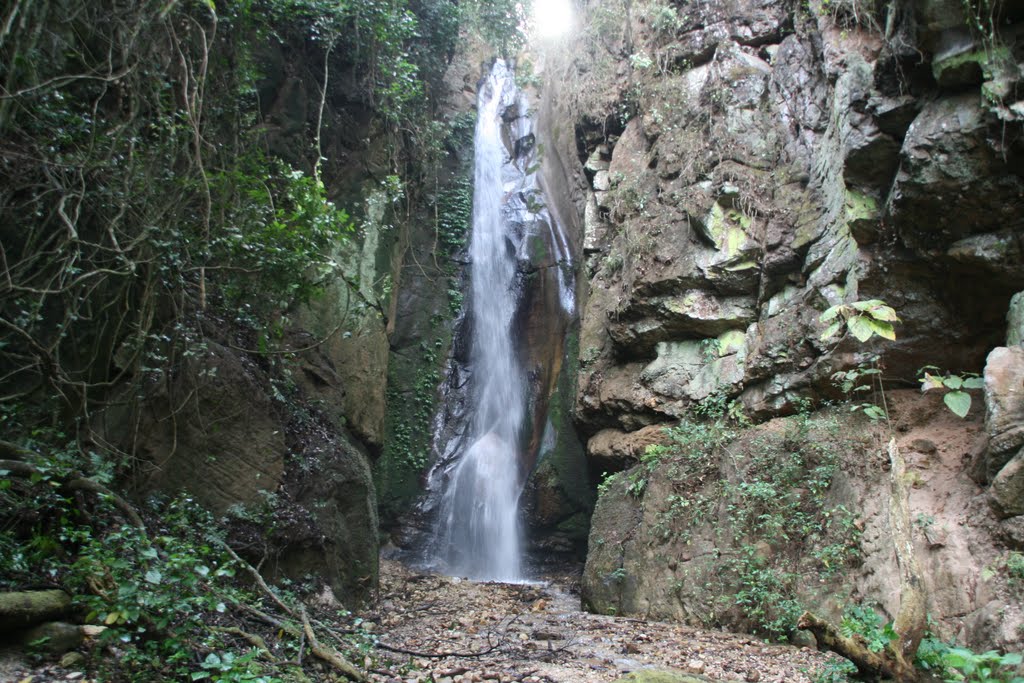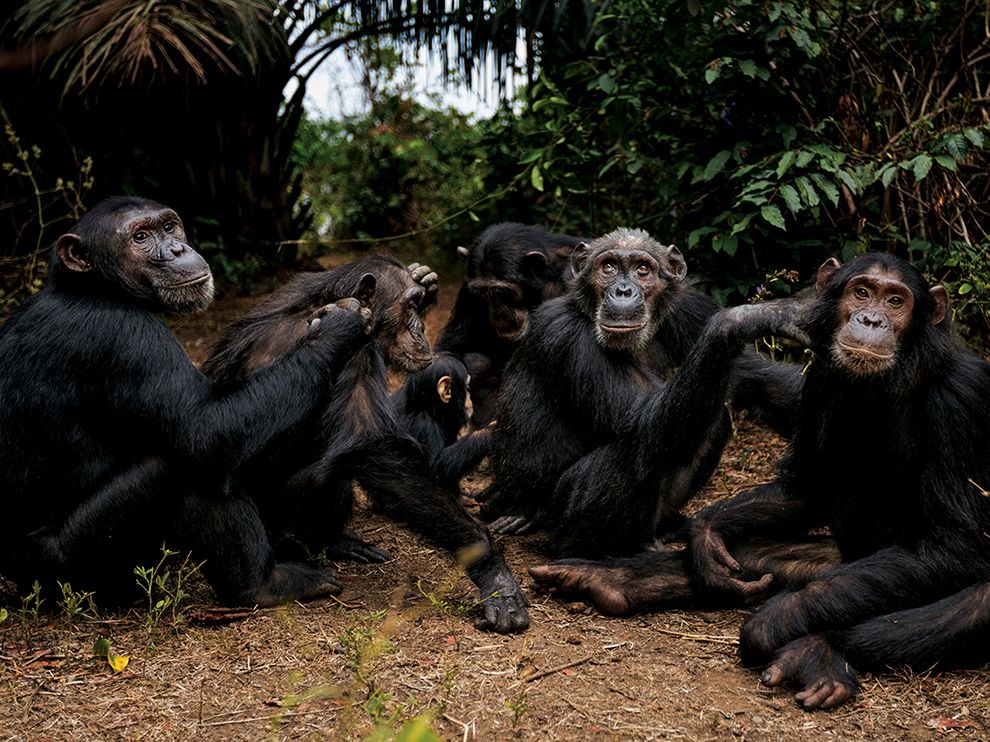 About Gombe National Park
About Gombe National Park
Gombe Stream is one of the best places in Africa to track chimpanzees. First researched in the 60’s by Jane Goodall, the primates are remarkably habituated. The experience is unforgettable.
Size: 52 km² / 20 mi²
Altitude: 767-1606 m / 2516-5269 ft

An excited whoop erupts from deep in the forest, boosted immediately by a dozen other voices, rising in volume and tempo and pitch to a frenzied shrieking crescendo. It is the famous ‘pant-hoot’ call: a bonding ritual that allows the participants to identify each other through their individual vocal stylizations. For the human listener, walking through the ancient forests of Gombe Stream, this spine-chilling outburst is also an indicator of imminent visual contact with man’s closest genetic relative: The Chimpanzee.

Gombe is the smallest of Tanzania’s National Parks: a fragile strip of chimpanzee habitat straddling the steep slopes and river valleys that hem in the sandy northern shore of Lake Tanganyika. Its chimpanzees habituated to human visitors – were made famous by the pioneering work of Jane Goodall, who in 1960 founded a behavioral research program that now stands as the longest-running study of its kind in the world. The matriarch Fifi, the last surviving member of the original community, only three-years old when Goodall first set foot in Gombe, is still regularly seen by visitors.
 Chimpanzees share about 98% of their genes with humans, and no scientific expertise is required to distinguish between the individual repertoires of pants, hoots and screams that define the celebrities, the power brokers, and the supporting characters. Perhaps you will see a flicker of understanding when you look into a chimp’s eyes, assessing you in return – a look of apparent recognition across the narrowest of species barriers.
Chimpanzees share about 98% of their genes with humans, and no scientific expertise is required to distinguish between the individual repertoires of pants, hoots and screams that define the celebrities, the power brokers, and the supporting characters. Perhaps you will see a flicker of understanding when you look into a chimp’s eyes, assessing you in return – a look of apparent recognition across the narrowest of species barriers.
The most visible of Gombe’s other mammals are also primates. A troop of beachcomber olive baboons, under study since the 1960s, is exceptionally habituated, while red-tailed and red colobus monkeys – the latter regularly hunted by chimps – stick to the forest canopy. The park’s 200-odd bird species range from the iconic fish eagle to the jewel-like Peter’s twin spots that hop tamely around the visitors’ center. After dusk, a dazzling night sky is complemented by the lanterns of hundreds of small wooden boats, bobbing on the lake like a sprawling city.
Pros and Cons
A chance to come face to face with chimps, one of Africa’s big apes
Pristine forest at the shore of Lake Tanganyika
Watching wildlife on a hike is a nice change from vehicle safaris
Very exclusive and not crowded
Wildlife
Gombe’s chimps are the main attraction, but the park is also home to a troop of habituated olive baboons that can usually be found on the lake shore. There are several other monkey species present, including red colobus monkeys, which are sometimes hunted by the chimps.
Scenery
Gombe lies at the shore of Lake Tanganyika. The forest is lush and divided by 13 streams which run down the escarpment to the sandy beach. To swim out and look back at the way the forested slopes climb up the steep escarpment is an unforgettable experience.









